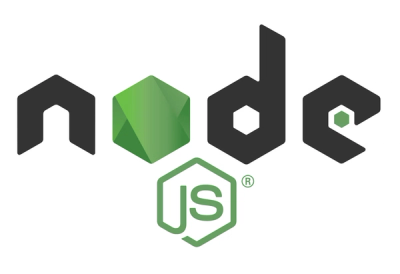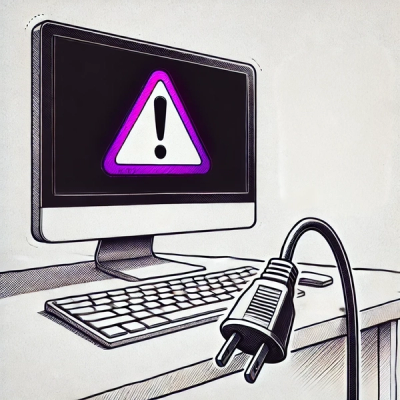
Security News
Node.js Homepage Adds Paid Support Link, Prompting Contributor Pushback
A new Node.js homepage button linking to paid support for EOL versions has sparked a heated discussion among contributors and the wider community.
The d3-drag module in D3.js provides a way to handle drag-and-drop interactions for SVG elements. It allows you to create drag behaviors that can be applied to elements, enabling you to move them around within an SVG canvas. This is particularly useful for creating interactive visualizations where elements need to be repositioned by the user.
Basic Dragging
This code snippet demonstrates how to enable basic dragging for a circle element. When the circle is dragged, its 'cx' and 'cy' attributes are updated to the current mouse position.
d3.select('circle').call(d3.drag().on('drag', function(event) { d3.select(this).attr('cx', event.x).attr('cy', event.y); }));Drag Start and End Events
This example shows how to handle drag start and end events. When the drag starts, a message is logged to the console, and another message is logged when the drag ends.
d3.select('circle').call(d3.drag().on('start', function(event) { console.log('Drag started'); }).on('end', function(event) { console.log('Drag ended'); }));Constrained Dragging
This code snippet demonstrates how to constrain the dragging of a circle within the bounds of an SVG canvas. The 'cx' and 'cy' attributes are clamped to ensure the circle stays within the specified width and height.
d3.select('circle').call(d3.drag().on('drag', function(event) { var x = Math.max(0, Math.min(width, event.x)); var y = Math.max(0, Math.min(height, event.y)); d3.select(this).attr('cx', x).attr('cy', y); }));Interact.js is a powerful JavaScript library for creating draggable, resizable, and multi-touch gestures for any HTML or SVG element. It offers more advanced features compared to d3-drag, such as inertia, snapping, and auto-scrolling.
Dragula is a simple drag-and-drop library for web applications. It focuses on simplicity and ease of use, making it a good choice for basic drag-and-drop functionality. However, it lacks the advanced customization and event handling capabilities of d3-drag.
React Draggable is a React component that provides draggable functionality for React applications. It is specifically designed for use with React, making it a better choice for React developers compared to d3-drag, which is more general-purpose.
Drag-and-drop is a popular and easy-to-learn pointing gesture: move the pointer to an object, press and hold to grab it, “drag” the object to a new location, and release to “drop”. D3’s drag behavior provides a convenient but flexible abstraction for enabling drag-and-drop interaction on selections. For example, you can use d3-drag to facilitate interaction with a force-directed graph, or a simulation of colliding circles:
You can also use d3-drag to implement custom user interface elements, such as a slider. But the drag behavior isn’t just for moving elements around; there are a variety of ways to respond to a drag gesture. For example, you can use it to lasso elements in a scatterplot, or to paint lines on a canvas:
The drag behavior can be combined with other behaviors, such as d3-zoom for zooming.
The drag behavior is agnostic about the DOM, so you can use it with SVG, HTML or even Canvas! And you can extend it with advanced selection techniques, such as a Voronoi overlay or a closest-target search:
Best of all, the drag behavior automatically unifies mouse and touch input, and avoids browser idiosyncrasies. When Pointer Events are more widely available, the drag behavior will support those, too.
If you use npm, npm install d3-drag. You can also download the latest release on GitHub. For vanilla HTML in modern browsers, import d3-drag from Skypack:
<script type="module">
import {drag} from "https://cdn.skypack.dev/d3-drag@3";
const handler = drag();
</script>
For legacy environments, you can load d3-drag’s UMD bundle from an npm-based CDN such as jsDelivr; a d3 global is exported:
<script src="https://cdn.jsdelivr.net/npm/d3-dispatch@3"></script>
<script src="https://cdn.jsdelivr.net/npm/d3-selection@3"></script>
<script src="https://cdn.jsdelivr.net/npm/d3-drag@3"></script>
<script>
const handler = d3.drag();
</script>
This table describes how the drag behavior interprets native events:
| Event | Listening Element | Drag Event | Default Prevented? |
|---|---|---|---|
| mousedown⁵ | selection | start | no¹ |
| mousemove² | window¹ | drag | yes |
| mouseup² | window¹ | end | yes |
| dragstart² | window | - | yes |
| selectstart² | window | - | yes |
| click³ | window | - | yes |
| touchstart | selection | start | no⁴ |
| touchmove | selection | drag | yes |
| touchend | selection | end | no⁴ |
| touchcancel | selection | end | no⁴ |
The propagation of all consumed events is immediately stopped. If you want to prevent some events from initiating a drag gesture, use drag.filter.
¹ Necessary to capture events outside an iframe; see #9.
² Only applies during an active, mouse-based gesture; see #9.
³ Only applies immediately after some mouse-based gestures; see drag.clickDistance.
⁴ Necessary to allow click emulation on touch input; see #9.
⁵ Ignored if within 500ms of a touch gesture ending; assumes click emulation.
# d3.drag() · Source, Examples
Creates a new drag behavior. The returned behavior, drag, is both an object and a function, and is typically applied to selected elements via selection.call.
# drag(selection) · Source, Examples
Applies this drag behavior to the specified selection. This function is typically not invoked directly, and is instead invoked via selection.call. For example, to instantiate a drag behavior and apply it to a selection:
d3.selectAll(".node").call(d3.drag().on("start", started));
Internally, the drag behavior uses selection.on to bind the necessary event listeners for dragging. The listeners use the name .drag, so you can subsequently unbind the drag behavior as follows:
selection.on(".drag", null);
Applying the drag behavior also sets the -webkit-tap-highlight-color style to transparent, disabling the tap highlight on iOS. If you want a different tap highlight color, remove or re-apply this style after applying the drag behavior.
# drag.container([container]) · Source, Examples
If container is specified, sets the container accessor to the specified object or function and returns the drag behavior. If container is not specified, returns the current container accessor, which defaults to:
function container() {
return this.parentNode;
}
The container of a drag gesture determines the coordinate system of subsequent drag events, affecting event.x and event.y. The element returned by the container accessor is subsequently passed to d3.pointer to determine the local coordinates of the pointer.
The default container accessor returns the parent node of the element in the originating selection (see drag) that received the initiating input event. This is often appropriate when dragging SVG or HTML elements, since those elements are typically positioned relative to a parent. For dragging graphical elements with a Canvas, however, you may want to redefine the container as the initiating element itself:
function container() {
return this;
}
Alternatively, the container may be specified as the element directly, such as drag.container(canvas).
# drag.filter([filter]) · Source, Examples
If filter is specified, sets the event filter to the specified function and returns the drag behavior. If filter is not specified, returns the current filter, which defaults to:
function filter(event) {
return !event.ctrlKey && !event.button;
}
If the filter returns falsey, the initiating event is ignored and no drag gestures are started. Thus, the filter determines which input events are ignored; the default filter ignores mousedown events on secondary buttons, since those buttons are typically intended for other purposes, such as the context menu.
# drag.touchable([touchable]) · Source, Examples
If touchable is specified, sets the touch support detector to the specified function and returns the drag behavior. If touchable is not specified, returns the current touch support detector, which defaults to:
function touchable() {
return navigator.maxTouchPoints || ("ontouchstart" in this);
}
Touch event listeners are only registered if the detector returns truthy for the corresponding element when the drag behavior is applied. The default detector works well for most browsers that are capable of touch input, but not all; Chrome’s mobile device emulator, for example, fails detection.
# drag.subject([subject]) · Source, Examples
If subject is specified, sets the subject accessor to the specified object or function and returns the drag behavior. If subject is not specified, returns the current subject accessor, which defaults to:
function subject(event, d) {
return d == null ? {x: event.x, y: event.y} : d;
}
The subject of a drag gesture represents the thing being dragged. It is computed when an initiating input event is received, such as a mousedown or touchstart, immediately before the drag gesture starts. The subject is then exposed as event.subject on subsequent drag events for this gesture.
The default subject is the datum of the element in the originating selection (see drag) that received the initiating input event; if this datum is undefined, an object representing the coordinates of the pointer is created. When dragging circle elements in SVG, the default subject is thus the datum of the circle being dragged. With Canvas, the default subject is the canvas element’s datum (regardless of where on the canvas you click). In this case, a custom subject accessor would be more appropriate, such as one that picks the closest circle to the mouse within a given search radius:
function subject(event) {
let n = circles.length,
i,
dx,
dy,
d2,
s2 = radius * radius,
circle,
subject;
for (i = 0; i < n; ++i) {
circle = circles[i];
dx = event.x - circle.x;
dy = event.y - circle.y;
d2 = dx * dx + dy * dy;
if (d2 < s2) subject = circle, s2 = d2;
}
return subject;
}
(If necessary, the above can be accelerated using quadtree.find, simulation.find or delaunay.find.)
The returned subject should be an object that exposes x and y properties, so that the relative position of the subject and the pointer can be preserved during the drag gesture. If the subject is null or undefined, no drag gesture is started for this pointer; however, other starting touches may yet start drag gestures. See also drag.filter.
The subject of a drag gesture may not be changed after the gesture starts. The subject accessor is invoked with the same context and arguments as selection.on listeners: the current event (event) and datum d, with the this context as the current DOM element. During the evaluation of the subject accessor, event is a beforestart drag event. Use event.sourceEvent to access the initiating input event and event.identifier to access the touch identifier. The event.x and event.y are relative to the container, and are computed using d3.pointer.
# drag.clickDistance([distance]) · Source
If distance is specified, sets the maximum distance that the mouse can move between mousedown and mouseup that will trigger a subsequent click event. If at any point between mousedown and mouseup the mouse is greater than or equal to distance from its position on mousedown, the click event following mouseup will be suppressed. If distance is not specified, returns the current distance threshold, which defaults to zero. The distance threshold is measured in client coordinates (event.clientX and event.clientY).
# drag.on(typenames, [listener]) · Source
If listener is specified, sets the event listener for the specified typenames and returns the drag behavior. If an event listener was already registered for the same type and name, the existing listener is removed before the new listener is added. If listener is null, removes the current event listeners for the specified typenames, if any. If listener is not specified, returns the first currently-assigned listener matching the specified typenames, if any. When a specified event is dispatched, each listener will be invoked with the same context and arguments as selection.on listeners: the current event (event) and datum d, with the this context as the current DOM element.
The typenames is a string containing one or more typename separated by whitespace. Each typename is a type, optionally followed by a period (.) and a name, such as drag.foo and drag.bar; the name allows multiple listeners to be registered for the same type. The type must be one of the following:
start - after a new pointer becomes active (on mousedown or touchstart).drag - after an active pointer moves (on mousemove or touchmove).end - after an active pointer becomes inactive (on mouseup, touchend or touchcancel).See dispatch.on for more.
Changes to registered listeners via drag.on during a drag gesture do not affect the current drag gesture. Instead, you must use event.on, which also allows you to register temporary event listeners for the current drag gesture. Separate events are dispatched for each active pointer during a drag gesture. For example, if simultaneously dragging multiple subjects with multiple fingers, a start event is dispatched for each finger, even if both fingers start touching simultaneously. See Drag Events for more.
# d3.dragDisable(window) · Source
Prevents native drag-and-drop and text selection on the specified window. As an alternative to preventing the default action of mousedown events (see #9), this method prevents undesirable default actions following mousedown. In supported browsers, this means capturing dragstart and selectstart events, preventing the associated default actions, and immediately stopping their propagation. In browsers that do not support selection events, the user-select CSS property is set to none on the document element. This method is intended to be called on mousedown, followed by d3.dragEnable on mouseup.
# d3.dragEnable(window[, noclick]) · Source
Allows native drag-and-drop and text selection on the specified window; undoes the effect of d3.dragDisable. This method is intended to be called on mouseup, preceded by d3.dragDisable on mousedown. If noclick is true, this method also temporarily suppresses click events. The suppression of click events expires after a zero-millisecond timeout, such that it only suppress the click event that would immediately follow the current mouseup event, if any.
When a drag event listener is invoked, it receives the current drag event as its first argument. The event object exposes several fields:
target - the associated drag behavior.type - the string “start”, “drag” or “end”; see drag.on.subject - the drag subject, defined by drag.subject.x - the new x-coordinate of the subject; see drag.container.y - the new y-coordinate of the subject; see drag.container.dx - the change in x-coordinate since the previous drag event.dy - the change in y-coordinate since the previous drag event.identifier - the string “mouse”, or a numeric touch identifier.active - the number of currently active drag gestures (on start and end, not including this one).sourceEvent - the underlying input event, such as mousemove or touchmove.The event.active field is useful for detecting the first start event and the last end event in a sequence of concurrent drag gestures: it is zero when the first drag gesture starts, and zero when the last drag gesture ends.
The event object also exposes the event.on method.
# event.on(typenames, [listener]) · Source
Equivalent to drag.on, but only applies to the current drag gesture. Before the drag gesture starts, a copy of the current drag event listeners is made. This copy is bound to the current drag gesture and modified by event.on. This is useful for temporary listeners that only receive events for the current drag gesture. For example, this start event listener registers temporary drag and end event listeners as closures:
function started(event) {
const circle = d3.select(this).classed("dragging", true);
event.on("drag", dragged).on("end", ended);
function dragged(event, d) {
circle.raise().attr("cx", d.x = event.x).attr("cy", d.y = event.y);
}
function ended() {
circle.classed("dragging", false);
}
}
FAQs
Drag and drop SVG, HTML or Canvas using mouse or touch input.
The npm package d3-drag receives a total of 5,011,680 weekly downloads. As such, d3-drag popularity was classified as popular.
We found that d3-drag demonstrated a not healthy version release cadence and project activity because the last version was released a year ago. It has 2 open source maintainers collaborating on the project.
Did you know?

Socket for GitHub automatically highlights issues in each pull request and monitors the health of all your open source dependencies. Discover the contents of your packages and block harmful activity before you install or update your dependencies.

Security News
A new Node.js homepage button linking to paid support for EOL versions has sparked a heated discussion among contributors and the wider community.

Research
North Korean threat actors linked to the Contagious Interview campaign return with 35 new malicious npm packages using a stealthy multi-stage malware loader.

Research
Security News
The Socket Research Team investigates a malicious Python typosquat of a popular password library that forces Windows shutdowns when input is incorrect.